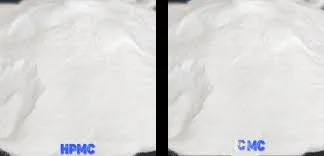
Nov . 25, 2024 13:37 Back to list
Hydroxyethyl Cellulose Applications and Benefits in Various Industries and Formulations
Hydroxyethyl cellulose (HEC) is a versatile and widely used cellulose derivative that has gained prominence in various industries due to its unique properties. Derived from natural cellulose, HEC is synthesized by the reaction of ethylene oxide with cellulose in an alkaline environment. This modification not only enhances its solubility in water but also significantly improves its functionality in numerous applications.
One of the most critical characteristics of HEC is its ability to form viscous solutions, which makes it an effective thickening agent in a variety of products. In the cosmetics and personal care industry, HEC is commonly utilized in lotions, creams, and shampoos to provide a desirable texture and stability. Its gel-forming ability allows for improved spreadability of products, ensuring an even application on the skin or hair.
.
The construction industry also benefits from HEC's properties. It is used in cement and mortar formulations to enhance water retention, improve workability, and extend the open time of construction materials. This ensures that the mixtures can be manipulated for longer periods before setting, resulting in more efficient and effective application processes.
hydroxyéthyl cellulose

Furthermore, HEC's emulsifying properties make it valuable in the food industry, where it is used as a stabilizer in sauces, dressings, and even ice creams. It helps maintain the consistency and texture of these products, preventing separation and ensuring a pleasant mouthfeel.
Environmental sustainability is another area where HEC shines. Being derived from natural cellulose, it is considered more environmentally friendly than many synthetic compounds. Additionally, research is ongoing into the potential use of HEC in bioplastics and other sustainable materials, showcasing its versatility and adaptability to new trends in sustainable development.
In conclusion, hydroxyethyl cellulose is a multifunctional compound that plays a crucial role across numerous industries. Its ability to modify viscosity, stabilize formulations, and enhance product performance makes it an invaluable component in cosmetics, pharmaceuticals, construction materials, and food products. As industries continue to prioritize sustainable solutions, HEC's natural origins and functional benefits position it as a vital player in the future of material science.
-
Versatile Hpmc Uses in Different Industries
NewsJun.19,2025
-
Redispersible Powder's Role in Enhancing Durability of Construction Products
NewsJun.19,2025
-
Hydroxyethyl Cellulose Applications Driving Green Industrial Processes
NewsJun.19,2025
-
Exploring Different Redispersible Polymer Powder
NewsJun.19,2025
-
Choosing the Right Mortar Bonding Agent
NewsJun.19,2025
-
Applications and Significance of China Hpmc in Modern Industries
NewsJun.19,2025







